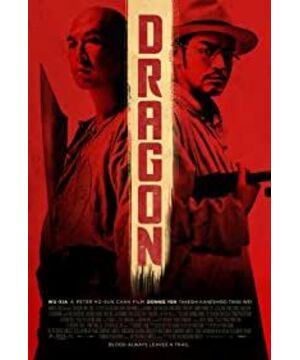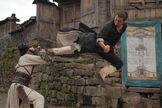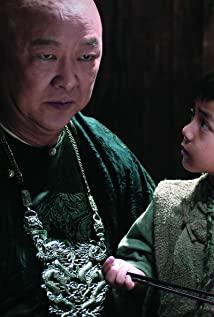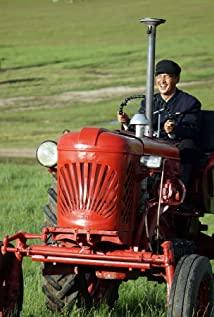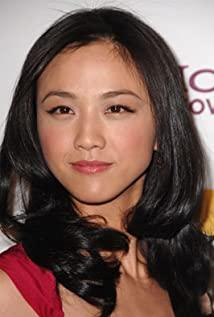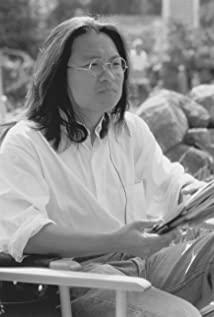For kung fu film lovers, "Martial Arts" will be a movie that makes them feel excited. In "Martial Arts", Donnie Yen contributed his most exciting kung fu fight scene since "Ip Man". This alone is enough to make a worthy trip for those fans who have expectations of Donnie Yen.
Although the movie "Martial Arts" has a name that sounds very ambitious, its story is actually very simple. For those who are familiar with "A History of Violence" directed by David Cronenberg (A History of Violence 2005) For the audience, the "Republic of China" "History of Violence" is sufficient to summarize this story relatively accurately. Within the framework of such a story, although the appearance of Takeshi Kaneshiro will surely surprise the audience, the core characters and scenes of the whole film are naturally all related to the role played by Donnie Yen.
This movie under the banner of "Martial Arts" is actually trying to solve the bottleneck problem of a Kung Fu film: how to combine the fiction and reality of "Kung Fu" and how to innovate. In the movie "Martial Arts", those imaginations about "Kung Fu" are subtly combined with the so-called "science", thus completing a rewriting of "Kung Fu".
From the big genre, "Kung Fu Movies" can be regarded as a sub-genre of "Martial Arts Movies." The biggest difference between the two is the age and the weapon. From the perspective of the audience’s traditional habits, martial arts films are generally costume films. Most of the time ends in the late Ming and early Qing. The characters mostly use cold weapons. The era background of Kung Fu films is mostly in the late Qing Dynasty and the early Republic of China. host. The fuzzy boundary between the two is basically based on the large-scale popularization and use of firearms in China as the demarcation point. "Chinese Kungfu" or "martial arts" is a Chinese myth that is not too old. In front of Western guns, I awkwardly encountered a problem in setting: no matter how powerful the martial arts, after encountering guns, they will all stop. vegetable. The good wish of "You have science and I have magical skills" can only be left to the undefeated East and West and Kung Fu Panda.
This awkwardness between myth and reality comes from the painful modern history of China-when the boxers with swords and spears were defeated in droves by the Yang spears, the myth of "wushu" naturally shattered. Although this legend has been continued in the movie, for modern kung fu movies, they can only be embarrassed in the plot, by setting a special situation to solve the contradiction of why the protagonist must use his fists instead of firearms. Another solution is to simply ignore this problem.
"Wu Xia" adopted this kind of thorough "ignorance" in the story setting and directly ignored this contradiction, but it must use "science" to explain the secret of kung fu, so it is in repeated entanglement. The movie sets the era in the remote mountainous areas in the early years of the Republic of China-this is an era when history is turning into legends, this is an era when Western learning is spreading to the east, so the imagination and fiction about "Kung Fu" are just like traditional Chinese and Western medicine. The combined CSI was cleverly mixed and matched, and finally turned into an interesting "Secret of the Kung Fu of Pseudoscience".
As an audience of kung fu film lovers, if they can ignore the entanglements and twists mentioned above, then the three fight scenes of Yen Zidan in "Martial Arts" will definitely make the audience's heartbeat speed up. Donnie Yen’s action design has always paid attention to the rationality of actual fighting skills. In Wuxia, he combined this fighting action skills based on the physical rules of the real world and the "kung fu imagination" that has been constructed through kung fu movies and martial arts novels for a long time. Combine them to create at least two exciting fighting scenes.
Most of the fighting action scenes in the film use traditional Hong Kong kung fu film techniques, such as lifting a wire to conceally enhance the difficulty of the action, downgrading shooting to highlight the action speed, and creating an illusion through the cooperation of the camera and the lens, and so on. But with the help of this series of movie magic, the action scenes in "Martial Arts" still carefully unify the action style under the film's overall "walking into pseudo-science" style, and almost all the actions have been painstakingly explained. Principles of mechanics or medicine. Although these details are all exaggerated and modified "pseudo-scientific" style, but the Kung Fu movie audience will not care about these, they will still be excited by this new stuff.
For fans of kung fu movies, the action scene maintains the previous level while making innovations in the difficulty and style of the action, and there is more than one, which is enough. As a specific audience group, kung fu movie fans have a very clear demand for kung fu movies, which is to realize the entertainment and dream-making functions of movies by appreciating various innovative fighting actions. This is a very clear and simple movie taste, and the taste itself is irrelevant.
View more about Dragon reviews


